I’m writing this post during COVID-19 pandemic (I’m actually in a state quarantine because I returned from abroad). Our business, just like many others, is negatively influenced. The main problem is cash flow, or to be precise, future cash flow projection.
📌 will our project and support people still have a full backlog in a month or two?
📌 will our salespeople convert new opportunities in the next weeks?
📌 what financial aid will be provided by the government?
📌 are our customers confident in paying for our services within the due date?
📌 will we be able to postpone credit and leasing payments?
And what-if not…
Our approach is always to look at hard data first, before making significant decisions. We practice what we preach and so we benefit from the same technology and business solutions that we implement to our customers. One of the key solutions is Cashflow Analytics. I recently published a few tips on how to gain better insight into cash flows on LinkedIn, and this blog is a summary of these tips.
1. Unlock invoicing data for data analysis
As simple as that, connect all invoicing data with all the details and associate business partners‘ info. Calculate ageing groups from the due date. Refresh, analyze and discuss at least every day.
Transparent, associated and interactive analysis of ARs and APs is a foundation for any business.
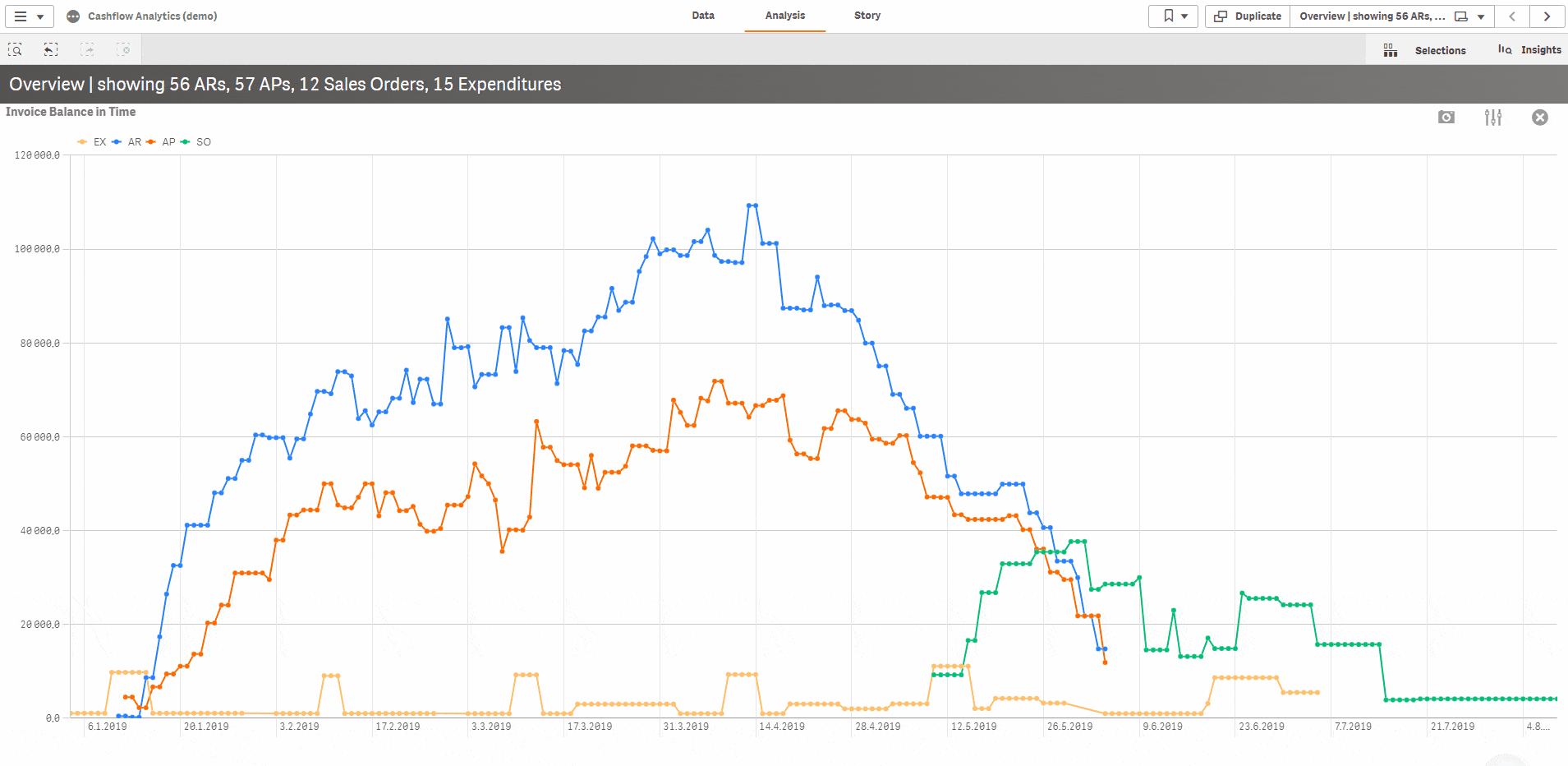
In my experience, connecting to data sources is NOT a barrier. Softwares like NetSuite, SAP, Navision, Xero, Zoho, etc. are quite logical and well documented (DB structure or API responses). Moreover, invoicing data is usually quite consolidated (2-3 source tables) and there are just a few fields really necessary to start with like, invoice date, due date, amount, associated partner.
2. Calculate cash flow projection
Calculate cash flow projection from (adjusted) due dates / expected payment dates. Then accumulate it and add your current cash balance to see the projected timeline.
Knowing the accumulated result of expected cash-ins and cash-outs gives you a clear focus on specific ARs, APs, and business partners.
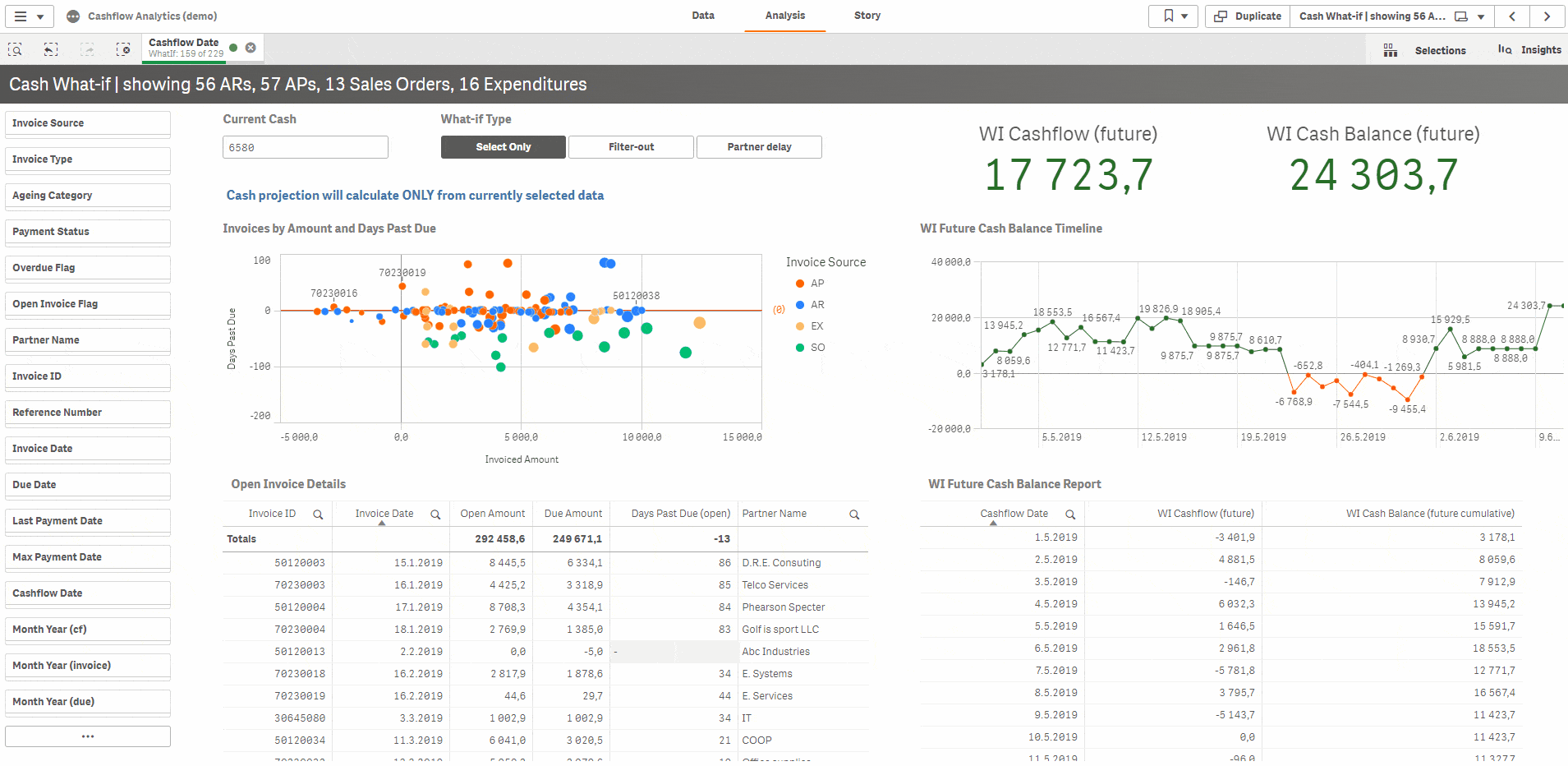
The trick is to define a relevant expected payment date for overdue invoices. One way is to go quite pessimistic and use the average number of the payment days per partner in the last 12 months to calculate the future due date. Scripting this is not easy, but once you have it, it’s relatively painless to change the methodology that fits your business (or current economic situation) the best.
3. Create what-if scenarios
Calculate the impact of excluding various ARs or APs from the cash flow projection. Also, play with negatively adjusting due dates (expected payment) by partners.
If you are a Qlik user, this is easily achieved by using SET Analysis. Plus, we use a write-back extension Inphinity Forms to input additional insights into our datasets and make our analysis more actionable.
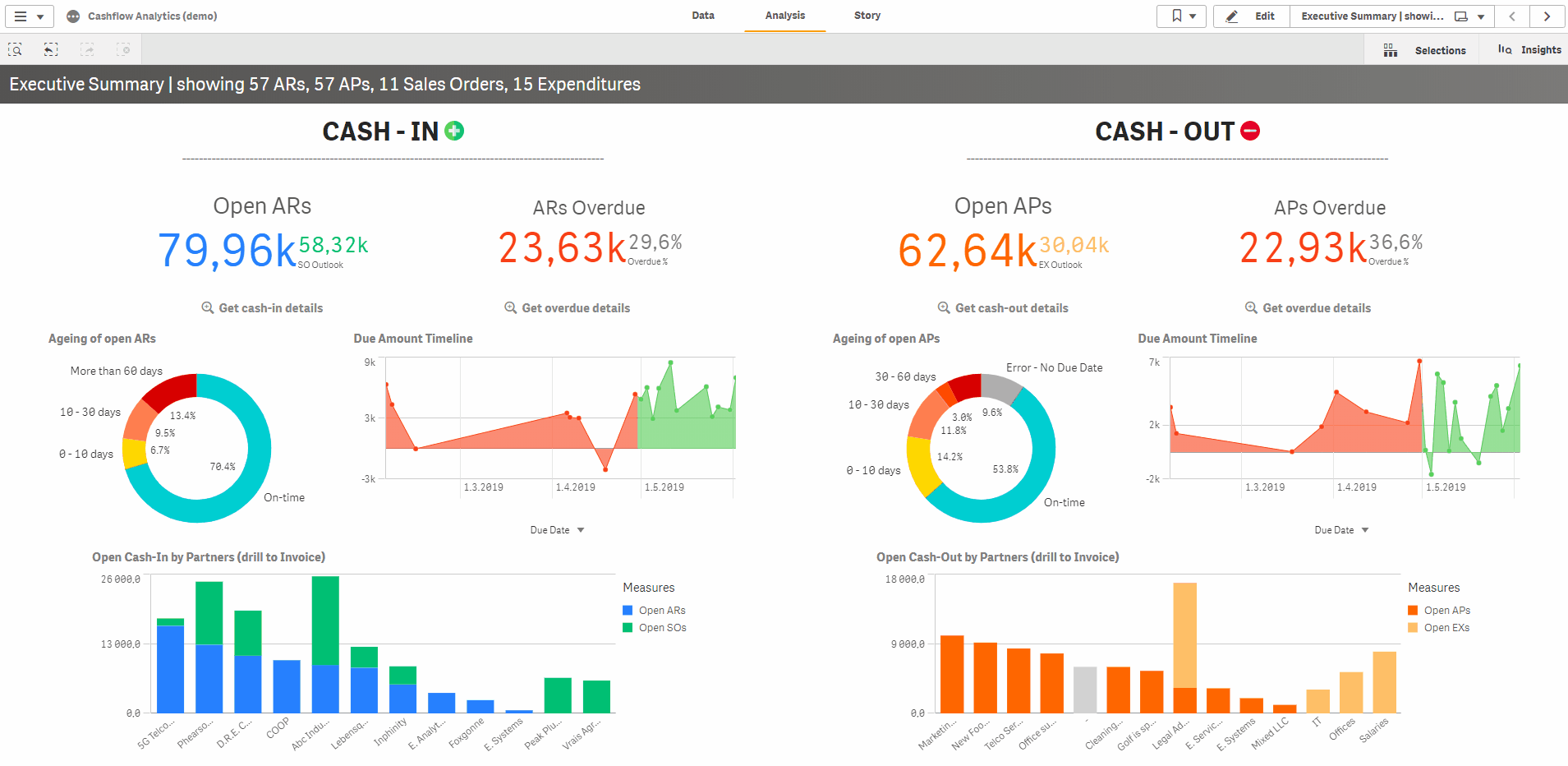
The ability to add business or market assumptions and model cash flow scenarios is one of the main advantages of unlocking accounting data and moving it to a BI platform. Every ERP can create a cash flow report, but it usually falls very short of what a finance manager actually needs – interactively analyze invoicing, combine it with other data domains and/or sources, and compare scenarios.
4. Add outlook
In order to see even further, add invoicing outlook from sales orders / forecasts, investments, expense plan, loan repayments, etc. to your cash flow projection, as all of these are future cash-ins and outs.
Bringing all these sources together reveals the true status of your business, extending the projection much beyond accounting data. And, better you can estimate the future, the more confidence you can have in business-defining decisions.
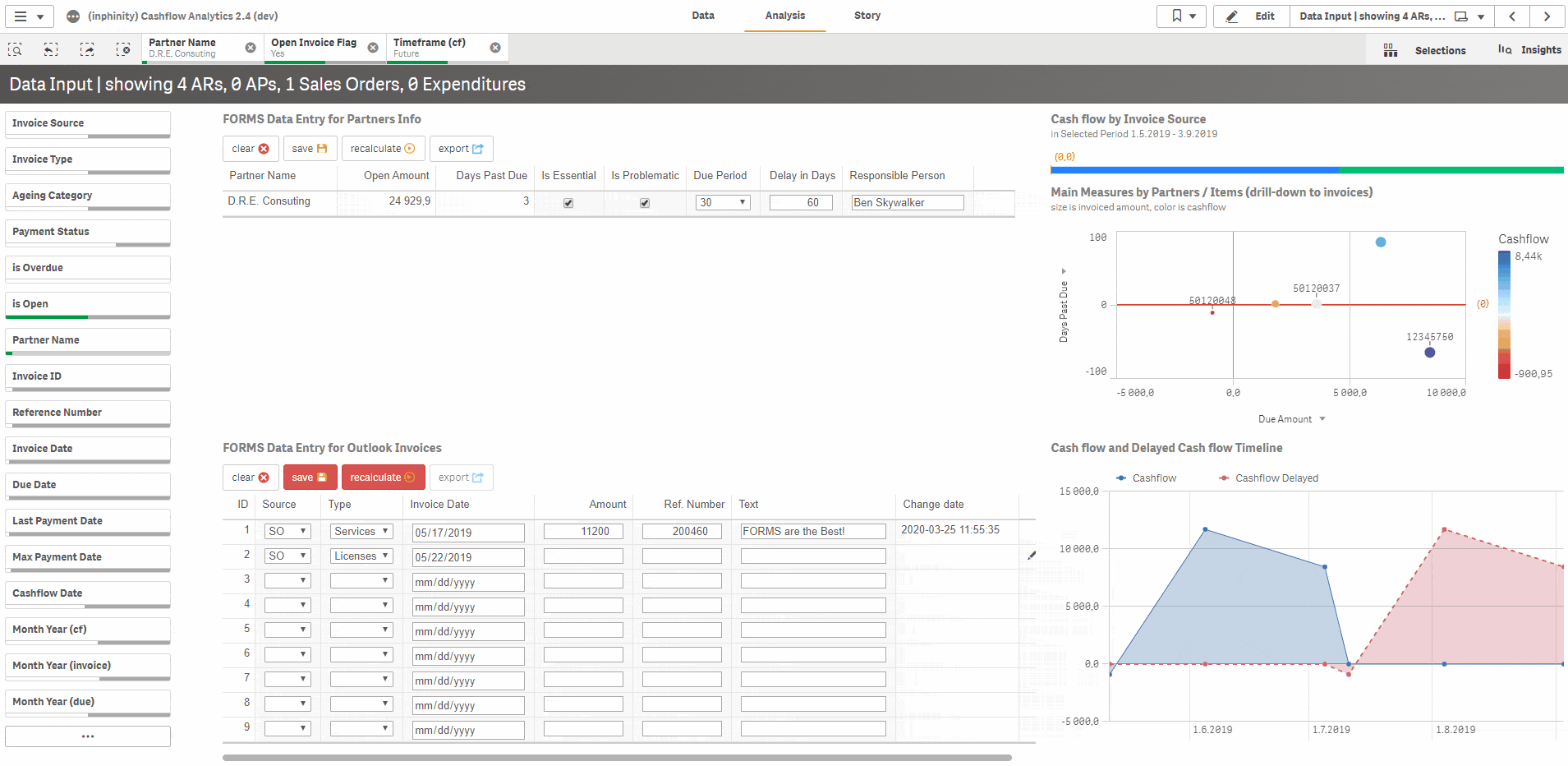
What is the next step? ACTION, e.g.:
✔️ contact selected customers to make sure they are OK with incoming payments
✔️ contact selected suppliers to negotiate prolongation of your due period
✔️ discuss with your sales reps payment performance of their customers
✔️ discuss with your bank better short-term credit interest rate terms
✔️ give your managers investment limits
✔️ contact your IT about data quality and how to increase it
etc…
One of my favorite quotes is by the famous racing driver, Mario Andretti, who said: „If everything seems under control, you’re not going fast enough.“
This idea applies perfectly to cash flow management. Because what I described above, making cash flow projection for what-if scenarios, that is NOT about control. Too much control brings inefficiency. The goal of data analytics is to bring confidence. Confidence allows us to not obsess about every invoice, customer or supplier. It lets us focus on what we do best – create value.
If you’d like to see some of the above screens live in action, go check the Cashflow Analytics demo available on inphinity.app platform here.
Or read my other blogs HERE.

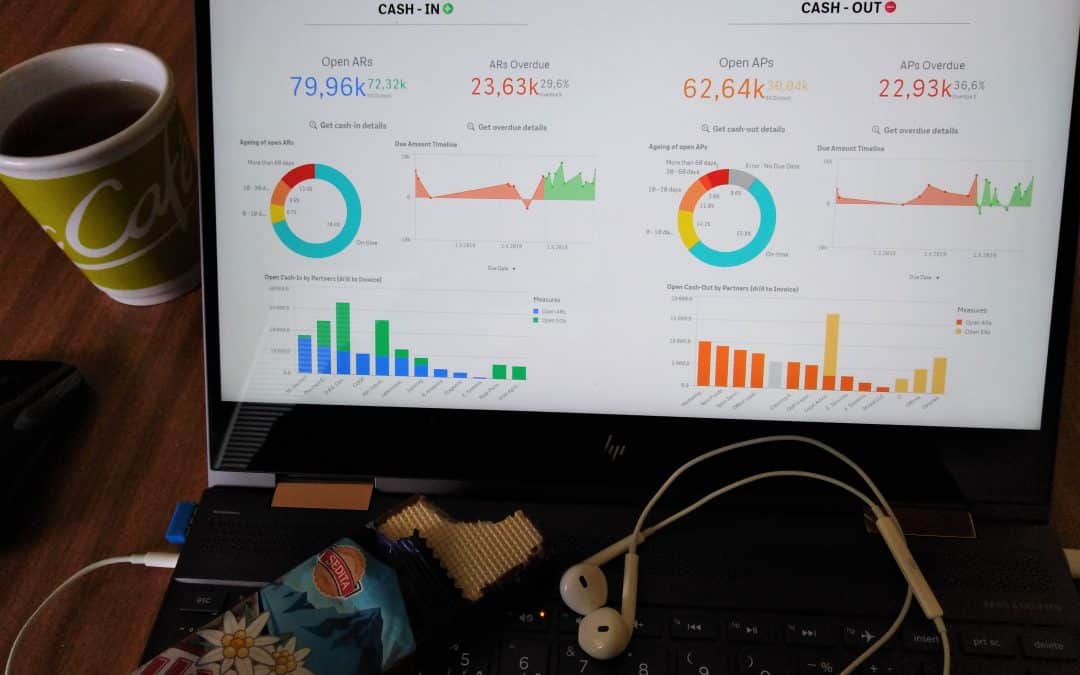

 (4,75)
(4,75)

